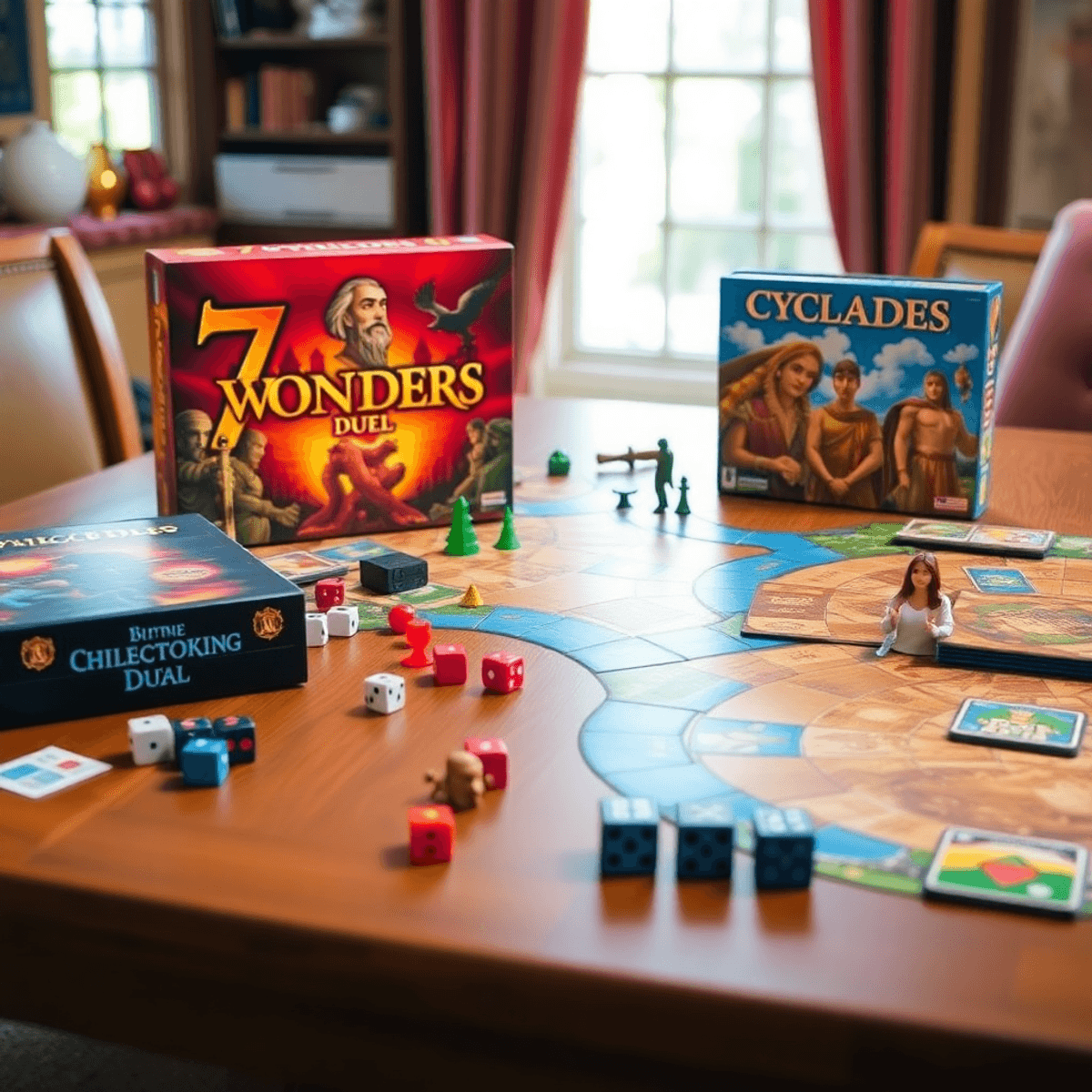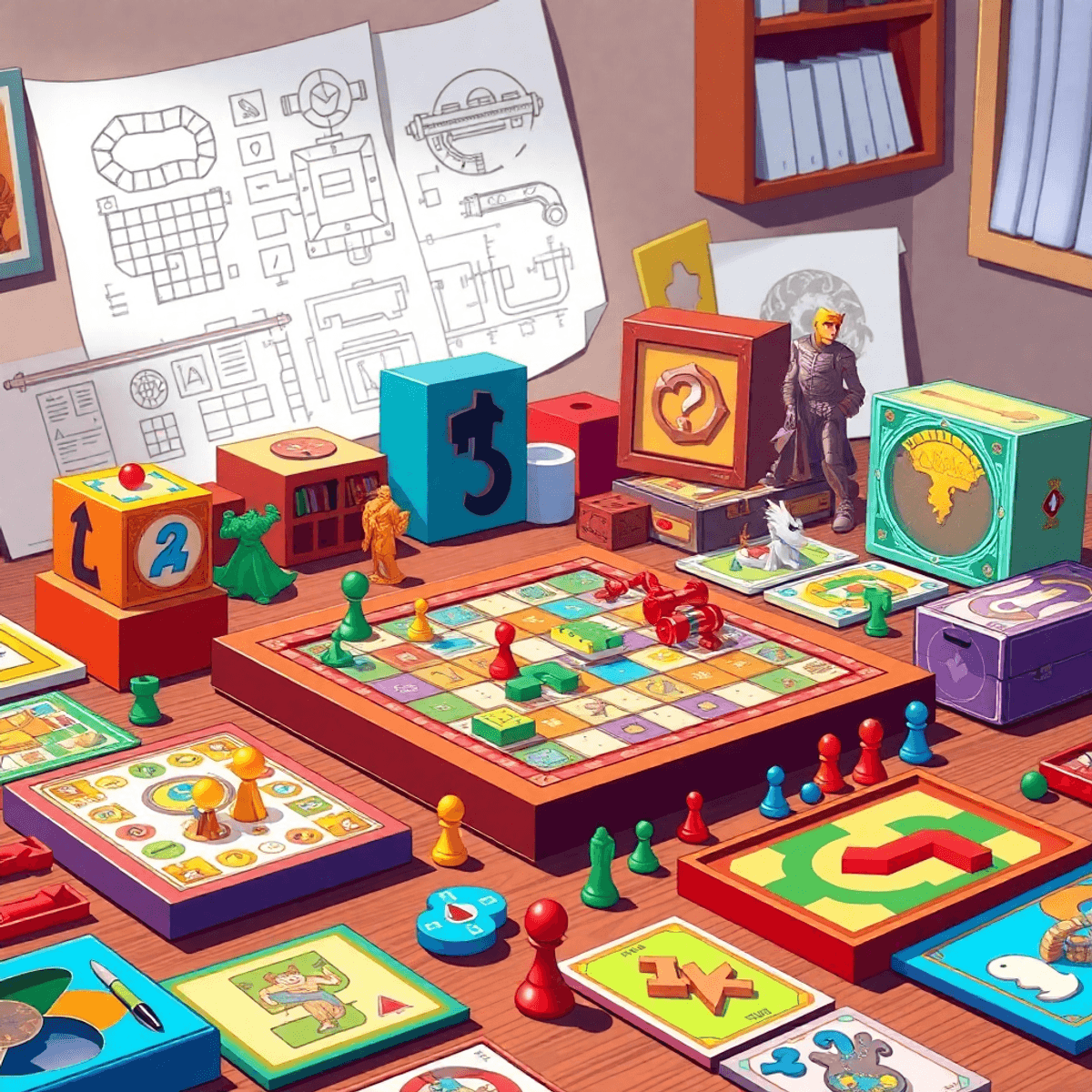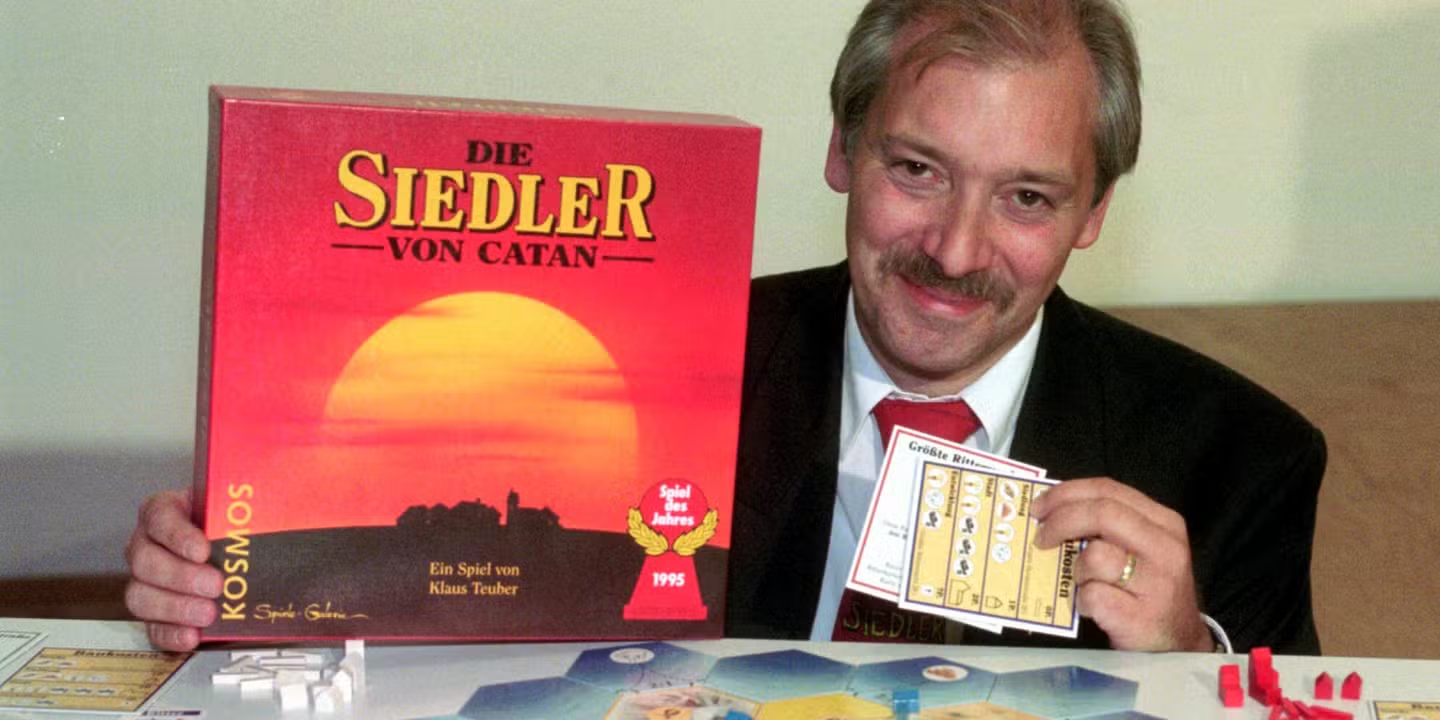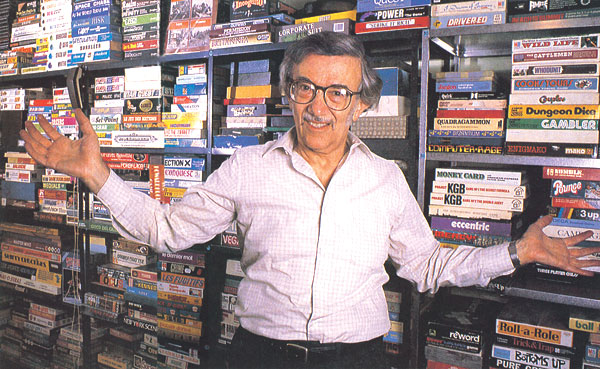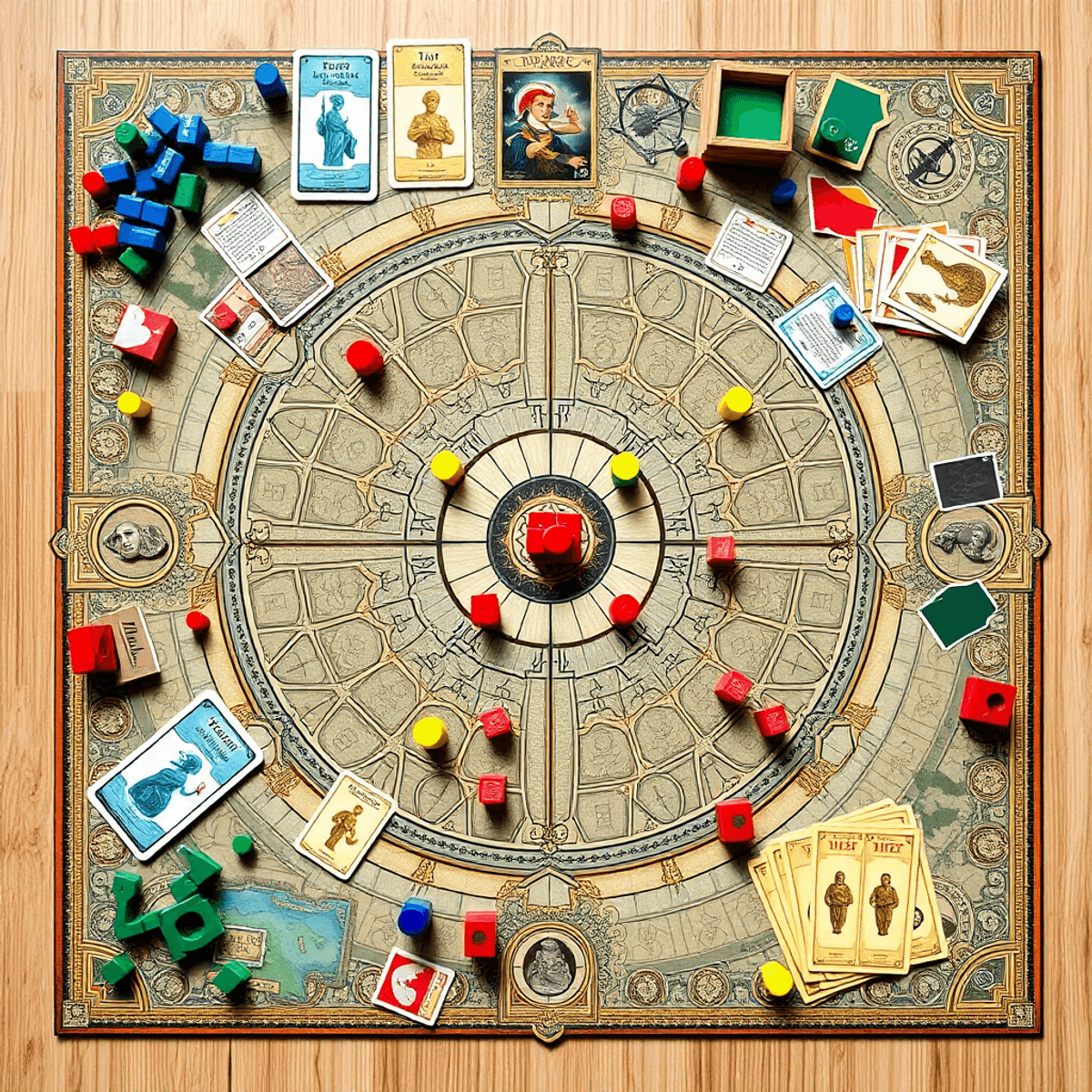
What makes a game truly rewarding for strategic thinkers? For countless board game enthusiasts, the answer lies in the intricate designs of Stefan Feld board games—masterfully crafted by the German designer who revolutionized modern gaming through his signature “point-salad” mechanics.
In the world of board games, point-salad refers to designs where players can score points through multiple paths and strategies. Think of it as a buffet of opportunities – each action, combination, and decision presents a chance to accumulate victory points. This design philosophy creates rich, layered experiences that reward careful planning and tactical flexibility.
Stefan Feld’s Signature Design Style
Feld’s genius shines through his ability to weave these scoring opportunities into cohesive, engaging experiences. From The Castles of Burgundy to Trajan, his games challenge players to navigate complex decision trees while maintaining strategic focus. His influence on Eurogame design has inspired a generation of designers and players who appreciate the depth of his mechanical innovations.
However, the world of board gaming is vast and diverse, with unique cultural and regional games that offer different experiences. For instance, there are traditional board games from various cultures, each revealing their significance and the rich traditions behind them.
Moreover, while Feld’s contributions are significant, it’s essential to acknowledge the impact of other famous board game designers, whose innovative creations have also left a lasting mark on the gaming industry.
As we explore Feld’s remarkable contributions to board gaming, we’ll uncover how his designs continue to shape the landscape of strategic tabletop experiences. We will also delve into the fascinating history of obscure and forgotten board games, their cultural significance, and notable examples from the past. Additionally, we will examine the origins and evolution of social and party board games, revealing their impact on society and cultural trends over time.

Who is Stefan Feld? A Profile of the Designer Behind the Games
Stefan Feld is a German game designer known for his complex and strategic board games. He was originally an educator, working as a teacher and school principal, which influences his approach to game design.
Feld’s games have received critical acclaim and numerous nominations for the Kennerspiel des Jahres award, including:
- Strasbourg (2011)
- Bruges (2013)
- Carpe Diem (2018)
His design style sets him apart from other Eurogame creators, with a focus on:
- Midweight complexity that appeals to both casual and serious gamers
- Multi-use cards that create engaging decision points
- Innovative dice mechanics that blend luck with strategic choices
- Interconnected systems that reward careful planning
Feld’s games offer deep strategic choices without overwhelming complexity. Players must balance immediate tactical decisions against long-term goals, creating intricate puzzles within the gameplay.
Each new release from Feld generates excitement in the gaming community, with players eager to discover his latest innovations and challenges. His games consistently rank among the most discussed titles on BoardGameGeek, solidifying his status as a prominent figure in modern board game design.
Understanding Point-Salad Scoring in Board Games
Point-salad scoring represents a game design philosophy where players can earn victory points through multiple, diverse scoring opportunities. Picture a salad bowl filled with different ingredients – each element contributes to the final dish, just as various actions and strategies contribute to a player’s total score.
In traditional scoring systems, players might focus on a single path to victory, such as territory control in Risk or route building in Ticket to Ride. Conversely, point-salad games break this mold by offering:
- Resource conversion tracks
- Building placement bonuses
- Set collection rewards
- Character ability points
- Achievement-based scoring
- End-game scoring conditions
Example: 7 Wonders and Its Scoring Diversity
Take 7 Wonders as an example – players score points from military conflicts, scientific discoveries, commercial structures, and wonder construction. Each path presents unique challenges and opportunities, allowing players to adapt their strategy based on available options.
The strategic depth of point-salad scoring lies in its flexibility. Players must:
- Evaluate trade-offs between different scoring opportunities
- Balance short-term gains against long-term point potential
- React to opponents’ choices while pursuing their own scoring paths
- Identify synergies between various point-generating mechanisms
This design approach creates engaging gameplay experiences where no single strategy dominates. Players can pivot between different scoring opportunities as game conditions change, rewarding tactical thinking and adaptability rather than rigid strategic paths.
Interestingly, the concept of board games isn’t a modern phenomenon. Ancient and Medieval board games also employed diverse scoring methods and strategic complexities that shaped the way we understand board games today. From Egypt to Mesopotamia, China to Rome, these ancient games have left a lasting cultural significance that continues to influence contemporary game design.
A contemporary example of the point-salad scoring system can be seen in games like Tiletum, which intricately weave together various strategies and scoring methods into one engaging experience. This game further exemplifies how the point-salad approach continues to evolve and shape modern board game design.
The Best Stefan Feld Games Exemplifying Point-Salad Design
Stefan Feld’s masterful implementation of point-salad mechanics shines brightest in these standout titles:
1. The Castles of Burgundy
A true masterpiece where dice-rolling meets strategic [tile placement](https://tabletoptrove.com/crafting-the-board-the-evolution-of-tile-placement-modular-game-design), players build their medieval estates by claiming hex tiles through clever dice manipulation. Each tile type offers distinct scoring opportunities:
- Knowledge tiles grant immediate special actions
- Animal tiles score exponentially with matching sets
- Castle tiles enable powerful bonus actions
- Ship tiles provide trade goods and victory points
- Building tiles create economic engines
2. Trajan
This innovative design features a Mancala-inspired action selection system where players distribute tokens across action spaces. Each section of the board presents unique scoring opportunities:
- Military conquests
- Senate influence
- Construction projects
- Trading ventures
- Forum activities
- Trajan bonus tiles
3. Bruges
A card-driven game where every card serves multiple purposes. Players can use cards for:
- Building houses
- Hiring characters
- Gaining influence
- Constructing canals
- Activating special abilities
4. Amsterdam
The game’s circular timing system creates intricate decision spaces. Players earn points through:
- Warehouse management
- Ship loading
- Trade good collection
- Market manipulation
- Building construction
5. Bora Bora
A deep strategic experience where [dice placement drives action selection](https://tabletoptrove.com/mastering-worker-placement-the-evolution-of-action-selection-in-board-games). Scoring opportunities include:
- God tile collection
- Island expansion
- Task completion
- Temple building
- Resource gathering
6. Carpe Diem
A tile-drafting game featuring interconnected scoring mechanisms:
- Territory development
- Resource production chains
- Pattern completion
- Building construction
- End-game scoring cards
Each game demonstrates Feld’s signature approach to point-salad design, where players must balance immediate gains against long-term strategies. The interwoven scoring systems create engaging puzzles where every action contributes to potential victory paths, rewarding players who can identify and capitalize on strategic synergies.
How Stefan Feld’s Designs Influence Eurogame Strategies Today
Stefan Feld’s innovative approach to game design has revolutionized modern Eurogames. His masterful integration of dice mechanics with strategic depth has transformed luck-based elements into tactical decision points. This shift in perspective has inspired a new generation of designers to reimagine traditional game mechanics.
Feld’s designs strike a delicate balance between complexity and accessibility through:
- Modular Rule Sets – Core mechanics remain consistent while additional layers add strategic depth
- Intuitive Action Systems – Clear cause-and-effect relationships help players grasp complex strategies
- Flexible Turn Structures – Players can adapt their strategies based on changing game states
The “Feld Effect” has reshaped how designers approach player engagement. His games create dynamic decision spaces where players must:
- Evaluate multiple scoring opportunities
- Adapt strategies based on available resources
- Balance short-term gains against long-term objectives
- React to other players’ choices without direct conflict
This design philosophy has influenced titles like Great Western Trail, Underwater Cities, and Lorenzo il Magnifico – games that embrace multi-layered strategy while maintaining approachable mechanics.
The lasting impact of Feld’s work extends beyond individual mechanics. His games demonstrate how strategic depth can emerge from simple building blocks, encouraging designers to create experiences that reward both tactical thinking and strategic planning without overwhelming new players.

The Unique Appeal of Point-Salad Mechanics in Modern Board Gaming
Point-salad mechanics tap into players’ deep psychological desire for autonomy and creative problem-solving. The thrill lies in discovering unique combinations and crafting personalized strategies from multiple scoring options. Each game session becomes a puzzle where players can experiment with different approaches, creating a sense of ownership over their chosen path to victory.
This design philosophy is not an isolated phenomenon. It has roots in the forgotten predecessors that shaped modern classics, influencing mechanics, themes, and diverse player experiences. Let’s peek into a memorable session of The Castles of Burgundy:
“I was trailing behind, focusing on completing animal territories while my opponent dominated the trade routes. In the final rounds, I discovered an unexpected synergy between my completed monasteries and a string of knowledge tiles. This combination, paired with careful dice manipulation, created a cascade of bonus actions that propelled me to an unexpected win. The beauty? Both strategies were equally valid paths to victory.”
This type of gaming experience highlights the psychological satisfaction of point-salad designs:
- Pattern Recognition: Players develop expertise by identifying valuable combinations across multiple game elements
- Risk Management: Balancing immediate gains against long-term scoring potential
- Strategic Flexibility: Adapting tactics based on available opportunities rather than following predetermined paths
The appeal extends beyond pure competition – point-salad mechanics create personal narratives within each game. Players become invested in their unique strategic journey, making each session feel like a distinct puzzle to solve. This transformation from simple race-to-the-finish experiences into rich strategic landscapes where creativity and adaptability shine is reminiscent of the golden age of board games, which significantly shaped modern gaming trends.
Moreover, the evolution of deck-building and card-driven games also plays a significant role in this landscape. These developments have further expanded the scope for creative problem-solving and strategic flexibility that point-salad mechanics offer.
Notable Challenges and Criticisms in Stefan Feld’s Designs
Stefan Feld’s games, while celebrated for their strategic depth, face several notable criticisms from the gaming community.
Production Issues with Amsterdam
The recent release of Amsterdam highlighted production challenges that have impacted player experience. Players reported misaligned components, printing errors, and significant delays in delivery – issues that affected the game’s initial reception.
Steep Learning Curve
The learning curve associated with Feld’s designs presents another significant hurdle. Bora Bora stands as a prime example of his complex combo-heavy mechanics:
- Multiple interconnected systems require several plays to master
- Dense rulebooks can intimidate new players
- Initial setup time can stretch beyond 20 minutes
- Scoring calculations demand careful attention throughout gameplay
These games target experienced gamers who enjoy:
- Deep strategic planning
- Complex puzzle-solving
- Multi-step optimization
- Extended gaming sessions (90+ minutes)
Mixed Reactions to Visual Presentation
The visual presentation of Feld’s games draws mixed reactions. While The Castles of Burgundy offers engaging gameplay, its muted color palette and functional artwork prioritize mechanics over aesthetics. Similar critiques extend to Notre Dame and In the Year of the Dragon, where artistic choices lean toward practical rather than immersive design.
Overwhelming Scoring Opportunities
Some players find the abundance of scoring opportunities overwhelming, creating analysis paralysis during crucial decision points. This complexity can stretch game length beyond stated play times, particularly with new players learning the intricacies of each scoring pathway.
Exploring German Board Game Designers Beyond Stefan Feld
Germany’s rich board gaming culture has produced numerous visionary designers who’ve shaped modern tabletop gaming. The country’s influence extends far beyond Stefan Feld’s point-salad masterpieces.
Uwe Rosenberg: The Titan of Worker Placement Games
Uwe Rosenberg stands as a titan of worker placement games. His groundbreaking designs include:
- Agricola – A tense farming simulation that revolutionized resource management
- A Feast for Odin – An epic Viking-themed game with polyomino placement
- Patchwork – A streamlined two-player puzzle that proves his versatility
Reiner Knizia: The Master of Mathematical Precision
Reiner Knizia, with over 700 published games, brings mathematical precision to game design. His notable contributions include:
- Tigris & Euphrates – A deep civilization builder with abstract mechanics
- Modern Art – An innovative auction game that mimics real art markets
- Through the Desert – A territory control masterpiece
The Factors Behind the German Board Game Renaissance
The German board game renaissance emerged from a perfect storm of cultural factors:
- Strong emphasis on family gatherings and social interaction
- Post-war focus on non-violent entertainment
- Establishment of the prestigious Spiel des Jahres award
- Nuremberg Toy Fair‘s influence on game publishing
This creative environment fostered other remarkable designers like Wolfgang Kramer (El Grande), Andreas Seyfarth (Puerto Rico), and Michael Kiesling (Azul). Each designer brings unique mechanical innovations while maintaining the signature German game philosophy: elegant rules producing deep strategic choices.
The Impact of Evolving Game Elements on Gameplay
Moreover, the evolution of various elements within board games, such as dice, has significantly impacted gameplay and strategy. This is particularly evident in many German-designed games which often incorporate these elements effectively.
Understanding the Broader Landscape of Board Gaming
In addition to this, the history and evolution of strategy board games also plays a crucial role in understanding the broader landscape of board gaming. Many of these strategy games have their roots in German design, showcasing the country’s influence in this genre.
The Rise of Legacy and Campaign-Based Formats
Furthermore, it’s interesting to note how certain games have started to evolve into legacy and campaign-based formats, offering players a more immersive and long-term gaming experience. This trend is becoming increasingly popular in the board gaming community, further diversifying the types of experiences available to players.
Insights from Victorian and Early 20th-Century Board Games
Lastly, exploring the evolution of Victorian and early 20th-century board games can provide valuable insights into how pastimes and social leisure activities have shaped modern gaming trends.
Conclusion
The strategic depth and engaging gameplay of Stefan Feld board games have left a lasting legacy in the world of Eurogames. His catalog is a treasure trove for players who thrive on intricate decision-making and multiple paths to victory. From the dice-driven brilliance of The Castles of Burgundy to the innovative Mancala-inspired system in Trajan, each title offers unique challenges and rewarding layers of strategy.
Whether you’re new to strategy board games or a seasoned enthusiast, Feld’s designs provide the perfect blend of accessibility and complexity. The satisfaction of discovering powerful combinations and optimizing diverse scoring opportunities makes his games endlessly replayable.
Ready to explore the world of Stefan Feld board games? Start with the beloved Castles of Burgundy as an ideal introduction to his point-salad design philosophy, or take on the complex combo chains of Bora Bora for a more advanced challenge. The choice is yours—so which Stefan Feld masterpiece will you conquer next?


